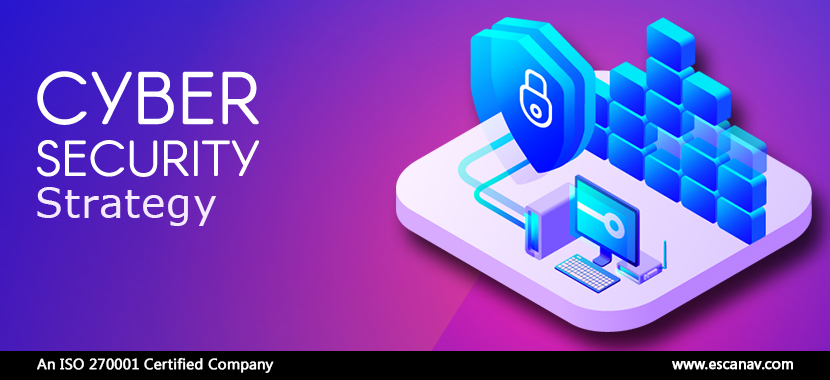In an era where individuals and organizations have opted to stay connected over the internet via a wide range of networks, cybersecurity has gained paramount importance. It’s even more important for those organizations that retain financial and other sensitive data since a data breach could lead to catastrophic consequences. Hence, stringing together a comprehensive strategy becomes
Like any other, IP based technology and systems are vulnerable to various kinds of breaches but there are various ways to mitigate the likelihood. The few basic steps in developing cybersecurity strategies ensure that all devices comply with the company policy along with the industry and government regulations and standards.
Our experts believe that there are 5 key factors that are important in ensuring that physical and other security devices provide impregnable protection against network breaches.
Updating and Patching
One of the most effective strategies for maintaining cybersecurity and its protocols is by ensuring software patches and updates are applied consistently. These updates counter, emerging and existing vulnerabilities. However, they are not frequently installed due to the ignorance of IT personnel or due to non-clarity on who would be responsible for taking care of this function.
While creating a cybersecurity strategy, it’s necessary to clearly state the ownership of these actions. Without clearly defining roles, important tasks such as patching and updating software’s in the network could remain outdated.
Apart from the responsibility of patching and updating, the IT team should have a test lab that is separated from the production network.
Vulnerability Management
Depending upon the size of the network, the IT department of an organization schedules routine scans of the devices connected to the network. Also, assuming the prowess of a physical security device without knowing what and how it functions might not qualify as a secure practice under the organizational cybersecurity policy.
Vulnerabilities that are identified IT scans are reported immediately, however, devices can’t be updated immediately since the vendors have to work in tandem with the providers to manufacture a patch and QA test it. In this scenario, an internal discussion is with the IT team is warranted to devise a short term mitigation plan against any emerging threats until an official patch is available.
Equipment Replacement
In times not long ago, security camera’s had a longer shelf life and they were expected to work without many hassles for around 7 to 10 years at a stretch. This is still feasible even when it’s advised to change security camera’s after a stipulated amount of time. However, there can be a lot of liabilities around the older models which could be discontinued by the manufacturing brand. In such a case, these cameras are vulnerable to attacks, without the ability to take advantage of the latest cybersecurity firmware updates or patches.
Given, replacing the entire surveillance ecosystem can be time-consuming and expensive, we advise replacing one-fifth of the cameras every year on an ongoing basis. This strategy ensures that cameras stay protected and are updated with newer and more effective cybersecurity features. The bonus of this strategy is that the costs can be shifted from capital to operating expenses.
Documentation and its Importance
Almost every manufacturer writes a product manual and includes it with the product package; to help support cybersecurity professionals securely assemble devices in their fight against cyber threats. These manuals become the baseline for the installer and the personnel has to match what’s written in the manual with the organization’s cybersecurity policy. Hence, a concrete, cybersecurity policy is essential to ensure the physical security systems and devices deliver the kind of protection that is expected of them.
Ensuring Supply Chain Security
It’s essential to know how the vendors are acquiring the cybersecurity devices and where are they coming from. Knowing the entire process from manufacturing to selling the devices to vendors and then to resellers and security professionals becomes important from a cybersecurity perspective.
Since the supply chain has also been used as a mode of attack, many manufacturers have taken steps to fortify their supply chain module. These methods include Trusted Platform Module (TPM), secure boot and signed firmware, or at times a combination of all the three. A TPM chip contains the encryption keys and certificates which are specific to the host system for hardware authentication. The encryption key is embedded within the chip and cannot be extracted. Secure boot is used to check the signed hash downloaded from the manufacturer. Once decrypted, the signed hash’s present in the boot sector of the firmware is also checked. Secure boot ensures that no one can tamper with the product during transit. In an unlikely even if someone manages to tamper it with malware, the device won’t function because the overall signed firmware and the hashes in the firmware are altered. This also helps to mitigate insider threat once the security system is installed.
These five factors provide an strong framework ensuring hackers and threat actors will not be able to use physical security devices to start a cyber-attack. Hence, while stringing together a cyber-security strategy, these considerations along with a written policy would play a crucial role in maintaining the overall protection against the numerous threats that originate from the digital landscape.
To read more, please check eScan Blog







